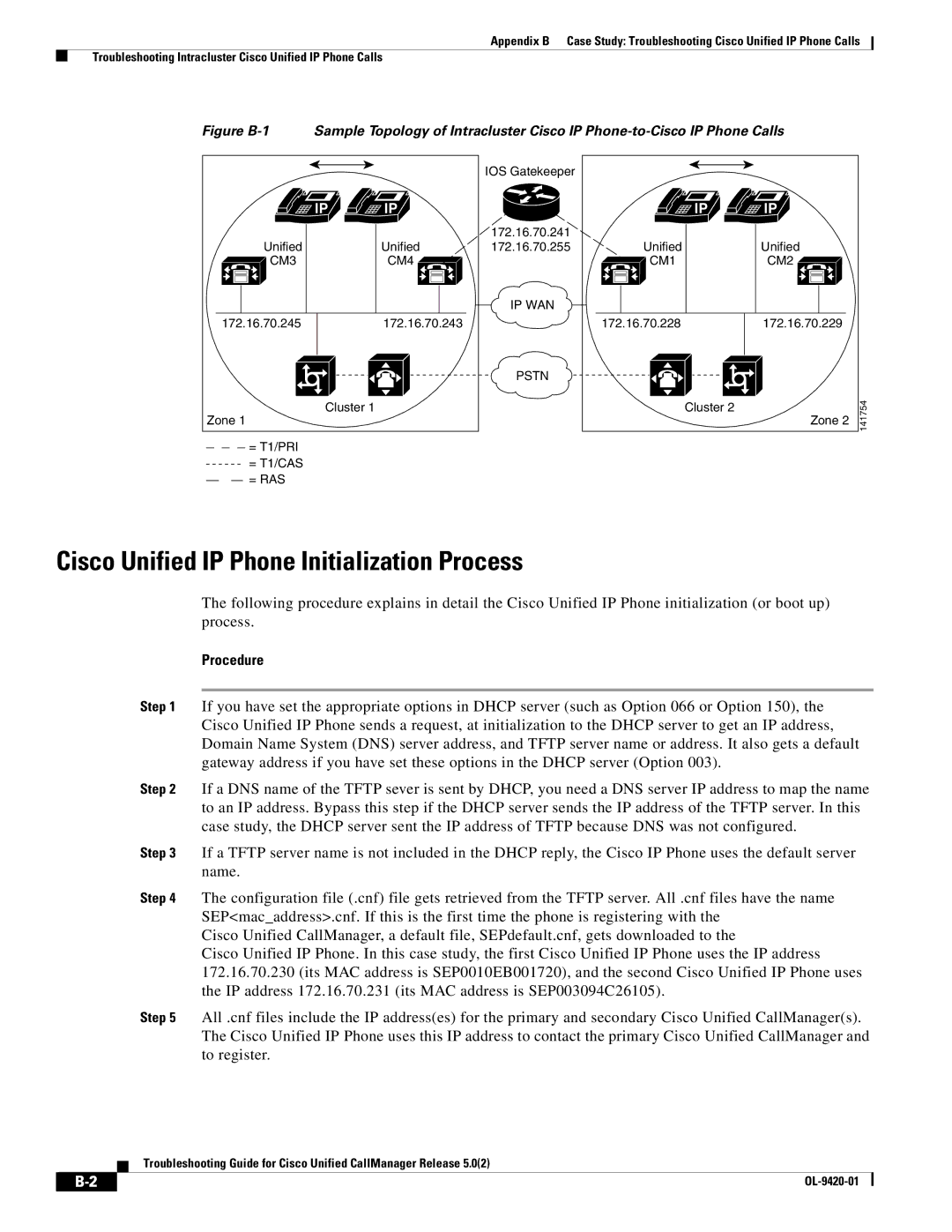
Appendix B Case Study: Troubleshooting Cisco Unified IP Phone Calls
Troubleshooting Intracluster Cisco Unified IP Phone Calls
Figure B-1 Sample Topology of Intracluster Cisco IP Phone-to-Cisco IP Phone Calls
IOS Gatekeeper
IP | IP |
| IP | IP |
|
| 172.16.70.241 |
|
|
Unified | Unified | 172.16.70.255 | Unified | Unified |
CM3 | CM4 |
| CM1 | CM2 |
|
| IP WAN |
|
|
172.16.70.245 | 172.16.70.243 |
| 172.16.70.228 | 172.16.70.229 |
|
| PSTN |
|
|
Cluster 1 |
|
| Cluster 2 |
|
Zone 1 |
|
|
| Zone 2 |
=T1/PRI
=T1/CAS
=RAS
141754
Cisco Unified IP Phone Initialization Process
The following procedure explains in detail the Cisco Unified IP Phone initialization (or boot up) process.
Procedure
Step 1 If you have set the appropriate options in DHCP server (such as Option 066 or Option 150), the Cisco Unified IP Phone sends a request, at initialization to the DHCP server to get an IP address, Domain Name System (DNS) server address, and TFTP server name or address. It also gets a default gateway address if you have set these options in the DHCP server (Option 003).
Step 2 If a DNS name of the TFTP sever is sent by DHCP, you need a DNS server IP address to map the name to an IP address. Bypass this step if the DHCP server sends the IP address of the TFTP server. In this case study, the DHCP server sent the IP address of TFTP because DNS was not configured.
Step 3 If a TFTP server name is not included in the DHCP reply, the Cisco IP Phone uses the default server name.
Step 4 The configuration file (.cnf) file gets retrieved from the TFTP server. All .cnf files have the name SEP<mac_address>.cnf. If this is the first time the phone is registering with the
Cisco Unified CallManager, a default file, SEPdefault.cnf, gets downloaded to the
Cisco Unified IP Phone. In this case study, the first Cisco Unified IP Phone uses the IP address 172.16.70.230 (its MAC address is SEP0010EB001720), and the second Cisco Unified IP Phone uses the IP address 172.16.70.231 (its MAC address is SEP003094C26105).
Step 5 All .cnf files include the IP address(es) for the primary and secondary Cisco Unified CallManager(s). The Cisco Unified IP Phone uses this IP address to contact the primary Cisco Unified CallManager and to register.
Troubleshooting Guide for Cisco Unified CallManager Release 5.0(2)
|
| ||
|
|
